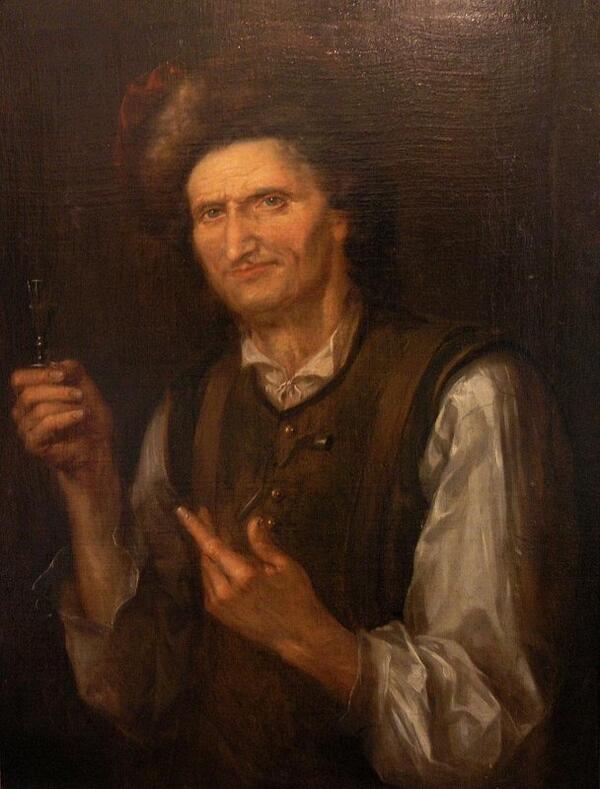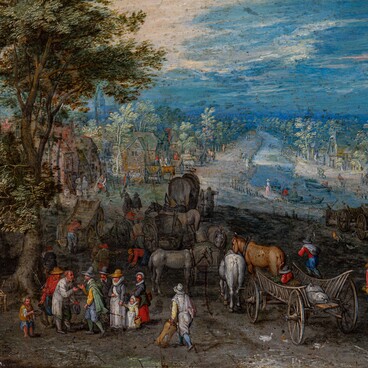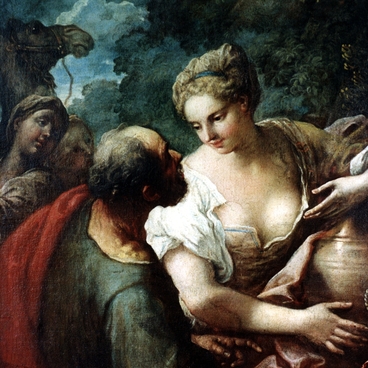Balthasar Denner, a German portrait painter, was born in the Danish district of Hamburg into the family of a famous preacher. When the boy was eight years old, he had a serious accident. Confined to bed for a long time, Balthasar began to paint to help pass the time. Even then it was obvious that he had an artistic talent.
From the age of eleven, Denner was trained in drawing by the Dutch painter Franz van Amam. Later he was taught by the artists from Danzig, then he entered the Prussian Royal Academy of Arts. As a student, Denner received his first important commission from a high-ranking official. The artist’s next work, a large group image of over 20 people, earned him recognition. His reputation as an outstanding portrait painter made him a sought-after artist, and he was provided with commissions from wealthy clients for a long time.
The artist visited many royal courts in Europe, where he painted portraits of rulers and their families. He was commissioned by aristocrats in London, Hanover, Rotterdam, etc. Denner’s miniatures and half-length portraits were highly commendable and distinguished by extraordinary meticulousness, sometimes even resulting in dry and dull colors.
The subject that the painter was particularly fond of in his work was quite unusual: the elderly. Perhaps Denner, with his meticulousness, was interested in the complexity of depicting withered skin, wrinkles and folds, like those of the character in the “Drinking Old Man”.
The artist chooses two specific attributes for his character of “sin” — a glass of wine and a pipe — and makes him pose with his hand expressively pointing to this glass. In this way the painter appeals to the viewer quite straightforwardly, stating that drinking and smoking are sinful.
In solving this problem, Denner creates a portrait not in its literal sense, but the so-called “tronie” — a conventional image of a person with certain emotions and in a certain outfit. Such images were very popular due to the incredibly detailed facial features, especially the skin of the characters in the paintings.
Popular during his lifetime, after his death Denner’s paintings come under sudden criticism of being too impassionate. Critics say that his portraits lack soul and that the characters of his images look more like wax figures than living people. However, Denner is now recognized as a classic of the German art school.
From the age of eleven, Denner was trained in drawing by the Dutch painter Franz van Amam. Later he was taught by the artists from Danzig, then he entered the Prussian Royal Academy of Arts. As a student, Denner received his first important commission from a high-ranking official. The artist’s next work, a large group image of over 20 people, earned him recognition. His reputation as an outstanding portrait painter made him a sought-after artist, and he was provided with commissions from wealthy clients for a long time.
The artist visited many royal courts in Europe, where he painted portraits of rulers and their families. He was commissioned by aristocrats in London, Hanover, Rotterdam, etc. Denner’s miniatures and half-length portraits were highly commendable and distinguished by extraordinary meticulousness, sometimes even resulting in dry and dull colors.
The subject that the painter was particularly fond of in his work was quite unusual: the elderly. Perhaps Denner, with his meticulousness, was interested in the complexity of depicting withered skin, wrinkles and folds, like those of the character in the “Drinking Old Man”.
The artist chooses two specific attributes for his character of “sin” — a glass of wine and a pipe — and makes him pose with his hand expressively pointing to this glass. In this way the painter appeals to the viewer quite straightforwardly, stating that drinking and smoking are sinful.
In solving this problem, Denner creates a portrait not in its literal sense, but the so-called “tronie” — a conventional image of a person with certain emotions and in a certain outfit. Such images were very popular due to the incredibly detailed facial features, especially the skin of the characters in the paintings.
Popular during his lifetime, after his death Denner’s paintings come under sudden criticism of being too impassionate. Critics say that his portraits lack soul and that the characters of his images look more like wax figures than living people. However, Denner is now recognized as a classic of the German art school.



